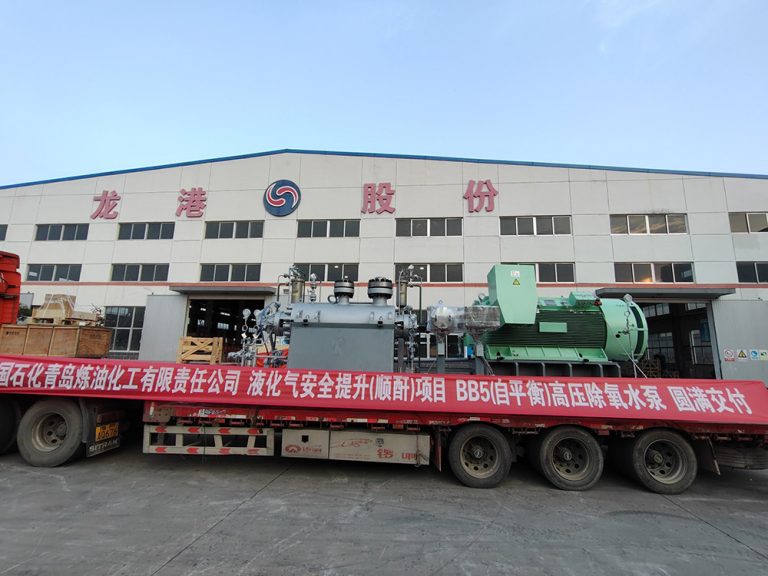Multistage pumps are versatile tools that can effectively manage diverse flow rates in various industries, thanks to their adaptable performance parameters. You will be familiar with multistage pumps’ powerful capability.
What is a Multistage Pump?
A multistage pump is a type of centrifugal pump that incorporates multiple impellers, or stages, in series within a single housing. This design allows the pump to generate higher pressures compared to single-stage pumps, making it suitable for applications requiring high head or pressure levels. Each stage increases the fluid pressure incrementally, thus enabling the pump to handle demanding tasks efficiently.

How Does a Multistage Pump Work?
The operation of a multistage pump involves fluid entering through the suction side and passing through multiple impellers arranged in sequence. Each impeller adds energy to the fluid boosting its pressure before it moves to the next stage. This step-by-step pressure increase allows the pump to achieve desired heat levels without compromising on flow rate stability. The design ensures that axial forces are balanced minimizing wear and tear on components like bearings and shafts.
Which Applications Use Multistage Pumps?
Multistage pumps are widely utilized in industries for their flexibility and effectiveness finding usage in a range of applications.
- Oil & Natural Gas: For transporting crude oil and gas over long distances.
- Petrochemical: In processing plants where high-pressure pumping is essential.
- Water Supply & Drainage: For municipal water distribution systems.
- Chemical Processes: In environments requiring precise control over fluid dynamics.
- Power Generation: As boiler feedwater pumps in power plants.
To delve deeper into the specifics of models and setups is available, through investigating Yantai Longgang Pump Industry.
What Are the Key Factors Influencing Pump Performance?
It is essential to grasp the elements that impact the efficiency of multistage pumps to maximize their functionality and guarantee their durability.
Environmental conditions when working
The performance of pumps is greatly influenced by conditions, like temperature and humidity as well as altitude changes, which can alter the properties of fluids and affect pump efficiency too. High temperatures could cause components to expand due to heat, while low temperatures might lead to an increase in thickness impacting the flow rates accordingly.
Impact of Fluid Dynamics
The behavior of fluids is the key to ensure the operation of a multistage pump system. The type of fluid influences the design and material selection for the impeller. Turbulence in the setup can lead to inefficiencies as well. Therefore, it is crucial to have a grasp of flow properties when choosing the pump for the job.
Material and Construction Quality
The choice of materials for making multistage pumps significantly impacts their longevity and efficiency levels in operation. The use of top-notch materials guarantees their ability to withstand corrosion and abrasions when dealing with fluids. Additionally, the overall quality of construction plays a role in determining maintenance requirements and operational dependability.
Key Differences Between Multistage Pump vs. Single Stage
When you look at multistage pumps versus stage pumps, one difference is how well they deal with pressure and flow needs. Multistage pumps use impellers to handle pressures which makes them great for tasks that need a lot of head or pressure. On the other hand single-stage pumps only have one impeller and are typically used for jobs with lower pressure requirements.
| Feature | Multistage Pump | Single Stage Pump |
| Number of Impellers | Multiple impellers arranged in series. | A single impeller. |
| Pressure Handling | Designed for high-pressure applications.
Each impeller stage contributes to pressure increase. Suitable for industries requiring precise movement of high-pressure fluids like petrochemicals and power generation. |
Typically used for lower pressure requirements. |
| Versatility and Efficiency | Can handle a wider range of flow rates and pressures.
Adaptable to varying demands across different operating conditions. |
May have limitations in handling high pressure or fluctuating demands. |
How Can You Optimize Multistage Pump Efficiency?
Enhancing the effectiveness of multistage pumps requires implementing tactics to improve their performance and extend their lifespan.
Regular Maintenance Practices
Regular upkeep is essential to keep multistage pumps running smoothly at their performance level. It’s important to conduct checks to catch any problems early on before they become major issues. Make sure to inspect parts, like bearings and seals for signs of damage and wear, and keep the lubrication systems in shape to avoid overheating.
Upgrades and Technological Enhancements
Integrating technologies can greatly improve the effectiveness of multistage pumps by upgrading impeller designs or utilizing frequency drives ( VFD). These upgrades offer control, overflow rates, and energy usage. Furthermore, advanced monitoring systems make it possible to track pump performance in time allowing for adjustments when needed.
FAQs
Q: Does a multistage pump consume a lot of energy?
Multistage pumps are created for high-pressure tasks but don’t automatically use energy levels; their energy usage varies based on factors such as the needs of the application and the effectiveness of the pump system itself. Managing energy-saving technologies, like VFDs, can enhance energy efficiency by adapting pump speed to match demand.
Q: Are multistage pumps self-priming?
In some cases, multistage pumps do not self-prime. They need to be filled with liquid or use a priming system to eliminate air from the suction line before they can start operating for tasks that need self-priming ability.
Q: What is the advantage of a multistage pump?
The key benefit of using a multistage pump lies in its capacity to produce pressures effectively at flow rates. This quality makes it a top pick for uses that require precise management of fluid dynamics. Furthermore, the ability to customize them to suit requirements is facilitated by their modular structure.
By grasping these elements of multistage pump efficiency and implementing them efficiently in your operations; you can guarantee dependable and effective fluid management customized to meet the needs of your specific industry sector. If you require guidance or tailored solutions it might be beneficial to explore the services provided by Yantai Longgang Pump Industry.









